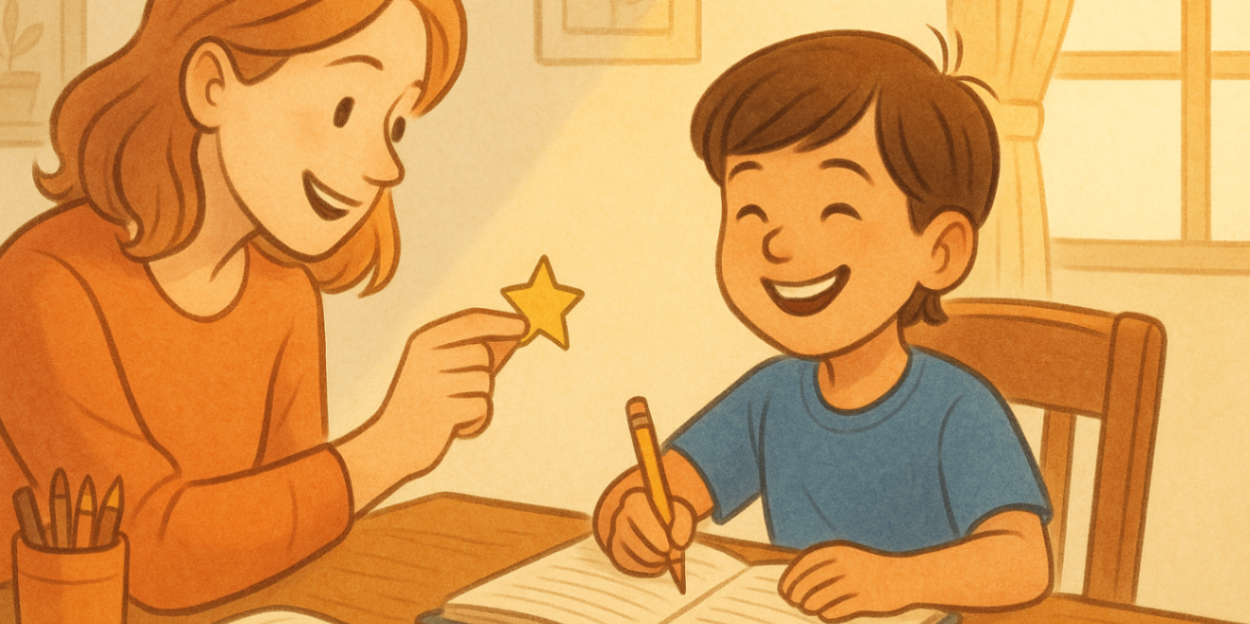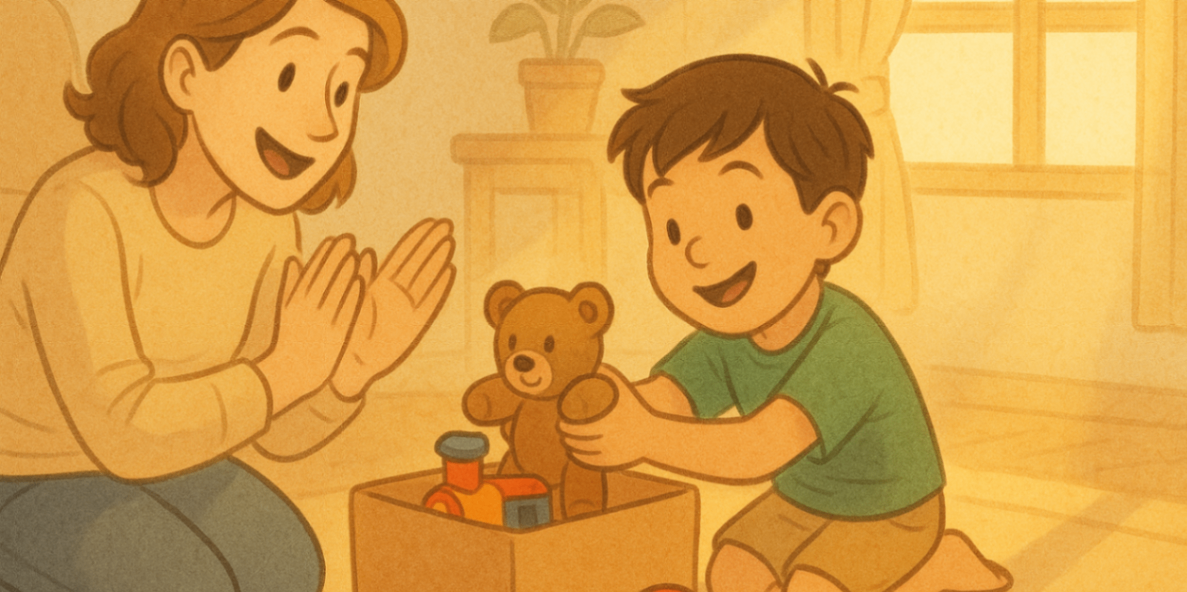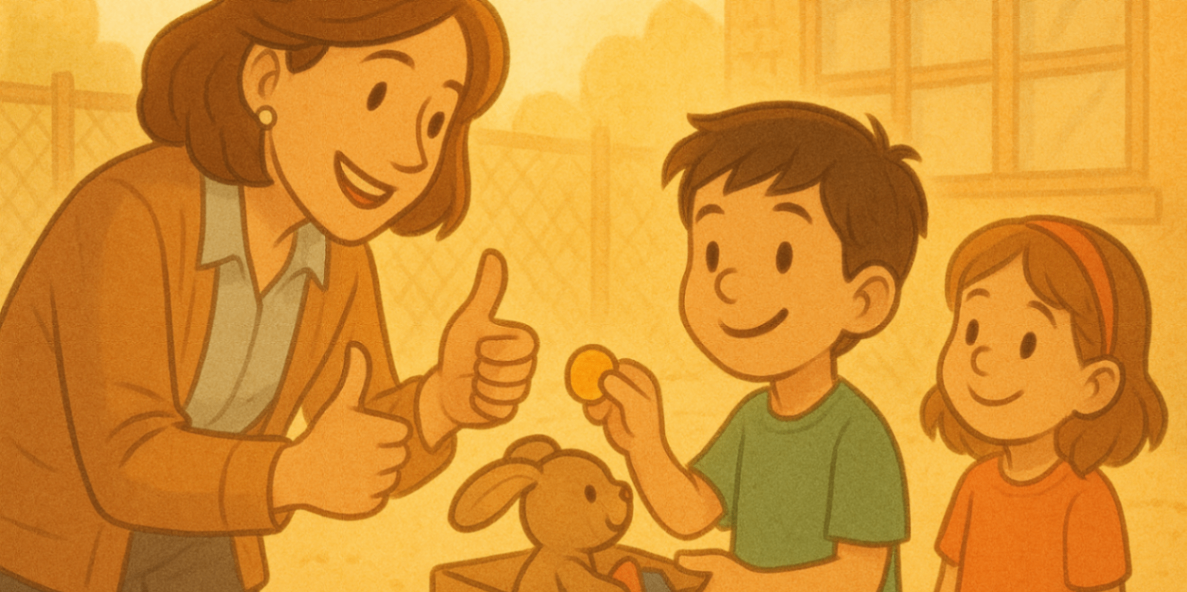
parent tips: using positive reinforcement in behaviour therapy
12 September, 2025
Introduction
Are you looking for practical ways to encourage positive behaviour in your children? The answer may be found in positive reinforcement. This simple yet powerful technique is a cornerstone of behaviour therapy. Parents, teachers, and therapists use it every day to shape healthy habits, reduce challenging behaviours, and build stronger family relationships.
The best part? You don’t need to be a professional to use it. With the right strategies, parents can apply positive reinforcement at home to help children thrive emotionally, socially, and academically.
Key Highlights
-
Positive reinforcement in behaviour therapy rewards desirable behaviour so it’s more likely to happen again.
-
Unlike negative reinforcement, this method adds a positive stimulus instead of removing an unpleasant one.
-
The focus is on celebrating good behaviour, not punishing unwanted actions.
-
Strategies include verbal praise, reward charts, and token systems.
-
Consistency and timely rewards are crucial for encouraging positive behaviour change in children.
What Is Positive Reinforcement in Behaviour Therapy?

In behaviour therapy, positive reinforcement means adding a reward immediately after a desired action. This increases the likelihood of the behaviour being repeated. For example:
-
A child finishes homework → parent gives praise.
-
A child shares toys → earns a sticker on a chart.
By creating a clear connection between action and reward, children learn that good choices lead to positive outcomes.
Why Positive Reinforcement Works for Children's Behaviour
Positive reinforcement taps into natural motivation: we repeat what feels good. When paired with rewards like praise, privileges, or small tokens, a child’s brain forms strong connections to desirable behaviours.
This method also works because it builds confidence and encourages kids to see themselves as capable. Unlike punishment, which only teaches what not to do, reinforcement teaches what to do.
Psychological Principles Behind Positive Reinforcement
The approach is rooted in operant conditioning, developed by B.F. Skinner. Key points:
-
Positive reinforcement = add a pleasant stimulus (e.g., praise, toy).
-
Negative reinforcement = remove an unpleasant stimulus (e.g., avoiding chores).
While both strengthen behaviour, positive reinforcement creates a more encouraging, less stressful learning environment.
Long-Term Benefits for Family Dynamics
Using positive reinforcement at home can:
-
Reduce stress by focusing on positive behaviours
-
Improve family relationships
-
Boost your child’s self-esteem and independence
-
Teach responsibility and cause-and-effect thinking
Over time, this creates a positive cycle: children feel appreciated, and parents feel empowered.
Everyday Examples of Positive Reinforcement Parents Can Use
 Many practical strategies can be easily woven into your daily life to encourage a positive outcome and guide your child’s behaviour.
Many practical strategies can be easily woven into your daily life to encourage a positive outcome and guide your child’s behaviour.
From simple words of praise to more structured reward systems, these methods are versatile and can be adapted to fit your child's age and personality. Let’s look at some specific examples you can start using right away.
Verbal Praise and Encouragement at Home
One of the simplest yet most powerful tools in your parenting toolkit is verbal praise. Expressing approval through words serves as a potent social reinforcer. However, to be most effective, your praise should be specific and immediate. Instead of a generic "Good job," try to connect your positive feedback to the specific behaviour you want to encourage.
For example, this type of positive reinforcer makes it clear exactly what action earned the praise. This helps your child understand what to do next time. Remember to deliver praise with genuine enthusiasm to maximise its impact.
Here are a few examples of effective verbal praise:
-
"I love how you shared your toys with your sister. That was very kind."
-
"Thank you for putting your plate in the sink without being asked."
-
"You focused so well on your homework tonight. Great effort!"
-
"It was so helpful that you cleaned up your room. It looks fantastic."
Reward Systems and Token Economies for Kids
For more structured support, reward systems and token economies are excellent options. A token economy uses "token reinforcers"—like stickers, points, or tally marks—that are awarded for performing a target behaviour. These tokens have no inherent value but can be collected and exchanged for meaningful physical rewards or privileges.
One common misconception is that this is bribery. However, it's a structured system where rewards, such as allowing more time on their cell phone, are earned for good behaviour, not given to stop bad behaviour. The key is that the reward must be valuable to the child. Gold stars might work for a second-grader, but a teenager will likely be more motivated by extra screen time or a later curfew.
You can create a simple chart to track progress. The schedules of continuous reinforcement can be adjusted as the behaviour becomes more established. Here is an example chart for a young child:
|
Points Earned |
Reward |
|---|---|
|
3 points per day |
30 minutes of screen time |
|
20 points per week |
Pick a toy ($5-$10 value) at the store |
|
25 points per week |
Toy plus staying up 2 hours later on Saturday |
Effective Steps for Implementing Positive Reinforcement at Home
To get the most out of positive reinforcement, it helps to have a clear plan. A structured approach ensures you are consistent and focused, which are key ingredients for successfully encouraging good behaviour.
First, you need to identify the focus of change and set clear goals. Then, it's all about how you deliver the reinforcement. Let’s break down these essential steps.
Identifying Target Behaviours and Goals
The first step in any behaviour modification plan is to pinpoint the exact actions you want to change. It’s important to identify specific target behaviours rather than vague goals like "be good." What does "being good" look like? Does it mean sharing toys, finishing homework on time, or speaking respectfully?
The creation of specific target behaviours allows everyone to be on the same page. A behaviour therapist would call this a "functional analysis," where you look at what triggers a problem behaviour and what consequences follow. For parents, it simply means choosing one or two clear, observable, and measurable behaviours to focus on at a time. For example, instead of "clean your room," a better target behaviour is "put all your toys in the bin before dinner."
Once you have your desired behaviour, you can set an achievable goal. A well-defined target makes it easier to track progress and know when to deliver reinforcement, setting your child up for success. According to one study, this process starts with identifying "specific target behaviours that will become the focus of treatment."²
Consistency and Timing in Giving Positive Feedback
Providing positive feedback consistently and at the right moments can significantly enhance the effectiveness of behaviour modification. This approach aligns with the principles of operant conditioning, where timely reinforcement of desired behaviour reinforces its occurrence and mitigates the risk of intervening behaviour. For young children, immediate and tangible reinforcers, like praise or small rewards, can foster good behaviour. By creating a structured behaviour plan that emphasizes positive outcomes, parents can increase the likelihood of positive behaviour while reducing the chances of unwanted behaviour in everyday situations.
Benefits of Positive Reinforcement for Children

-
Encourages new skills and social behaviours
-
Builds self-confidence and motivation
-
Promotes long-lasting behaviour change
-
Supports learning in both home and school settings
Positive Reinforcement Under the NDIS: What to Know
For families supported by the National Disability Insurance Scheme (NDIS), positive reinforcement is a widely recognized and supported strategy. The NDIS often funds supports related to behaviour therapy, where positive reinforcement is a primary technique used to help participants achieve their goals. These approaches are considered evidence-based practices for helping individuals learn new skills and reduce challenging behaviours.
If your child has an NDIS plan, you can discuss incorporating therapies that use these methods with your support coordinator or plan manager. Professionals in fields like child psychiatry and behaviour therapy can design tailored programs that use positive reinforcement in structured therapy settings. They can also train you to apply these techniques consistently at home, ensuring that the strategies align with your child’s NDIS goals and promote their overall well-being.
How Behaviour Therapists Use Positive Reinforcement in Sessions
Behaviour therapists are experts at using positive reinforcement in a structured and systematic way during a therapy session. They begin by conducting a thorough assessment to identify specific target behaviours and determine what kind of positive reinforcer will be most motivating for the client, particularly those that encourage engaging in social interactions. This is a crucial step, as the type of reinforcer—whether it's social praise, a tangible item, or an activity—must be valuable to the individual for the therapy to be successful.
In sessions, therapists might use techniques like "shaping," where they reward small steps that move a client closer to the final desired behaviour. They also establish clear token economies or reward charts and maintain strict consistency in delivering rewards. For clients with challenging behaviours, therapists use this approach to teach alternative, more appropriate behaviours, giving them the tools and motivation to make better choices instead of just trying to extinguish the negative action, contributing to significant behaviour change.
Conclusion
Positive reinforcement is more than a parenting hack — it’s a proven behaviour therapy tool that helps children thrive. By focusing on positive actions and rewarding them, families can create a supportive home environment that encourages long-term growth.
Ready to bring positive reinforcement strategies into your child’s therapy plan? Book your consultation now or call us today 02 9133 2500 to get started.
Frequently Asked Questions
What are the most effective types of positive reinforcement?
The most effective positive reinforcer depends on the individual child. The main types include social reinforcers (praise, smiles), tangible reinforcers (toys, treats), natural reinforcers (good grades as a result of the behaviour from studying), and token reinforcers (points or stickers). The best approach is to find what truly motivates your child.
Can positive reinforcement be used with older children or teenagers?
Absolutely. While the rewards will change, the principles of positive reinforcement are effective for all ages. For teenagers, effective reinforcers might include more screen time, a later curfew, or more freedom with friends. This form of behaviour modification helps encourage desirable behaviour and teach new behaviours at any age.
What should parents do if positive reinforcement doesn't seem to work?
If your positive reinforcement plan isn't working, first review your approach. Is the reward truly motivating for your child? Are you being consistent and immediate? The unwanted behaviour might be receiving accidental reinforcement. If problems persist, consider consulting a behaviouur therapist to help refine your behaviour plan.
.svg)












